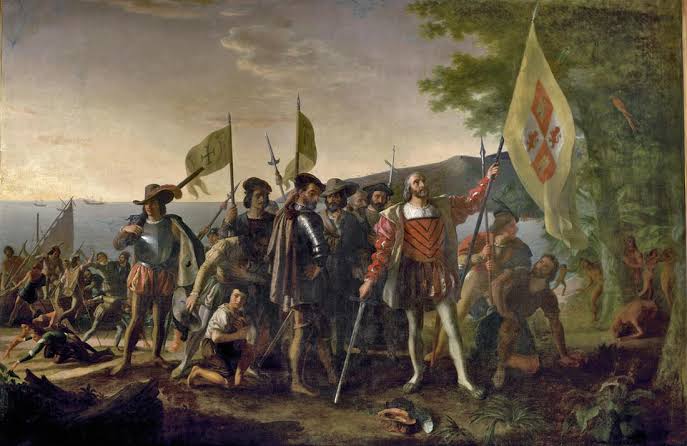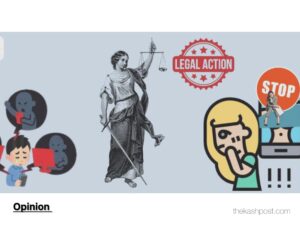The Genocidal Explorer: The True Story of Christopher Columbus

Opinion by | Umer Baba
In 1453 Sultan Mehmed the Conqueror captured the unconquerable city Constantinople now called Istanbul. The fall of the city sent shock waves across Europe for it meant there was now no access to the East no India no Japan no silk or spices. The mighty Ottoman Turks controlled the land routes while on the other side stood the Mamluks. For Europe it was a nightmare.
But difficult times often give birth to desperate ideas. Across Europe explorers and kingdoms began to search for new routes to Asia to bypass the Ottomans entirely. This race for discovery was at its peak when a young man from Genoa Christopher Columbus appeared before Queen Isabella of Spain asking for help to find a western sea route to Asia.
He had done his calculations but with grave errors. Columbus believed the Earth was round which scholars already knew but he thought it was far smaller than it really was. In truth he was neither a skilled mathematician nor a great sailor just an ordinary seaman with dangerous confidence. Yet his charm and persistence convinced Spain’s rulers. They agreed to fund his voyage and promised him a share of any gold he found.
He was not sailing to explore the world but to chase gold. His voyage was a gamble and had the American continents not existed between Europe and Asia the men on his ships would have sailed to their deaths.
During the journey his crew began to lose faith. His calculations were failing the sea seemed endless and at one point they even planned to kill him. But luck or fate was with Columbus. He reached new islands in the Caribbean which he believed were the coasts of India. Even until his death he never realized his mistake.
The people of these new lands welcomed the strangers with kindness thinking they had come from heaven. They did not know they had welcomed the messengers of hell.
Columbus himself wrote that the islands were full of people as numerous as the stars in the sky. The Spanish friar Bartolomé de las Casas who witnessed the conquest later estimated that more than three million natives lived there. Modern research however suggests the number was closer to a few hundred thousand.
Yet the true tragedy is not in the debate over how many there were but in how quickly they vanished. Only twenty two years after Columbus’s first voyage Spanish officials counted just twenty six thousand survivors on the same islands. And after another thirty four years fewer than five hundred remained.
The main killer was disease like smallpox and measles that swept through people who had no immunity. But the brutality of the Spanish was never far behind. Forced labor hunger and violence finished what sickness began.
It was one of the most shocking disappearances of a people in human history. Villages emptied overnight the dead lay unburied and silence replaced life. From this destruction began another darkness the African slave trade when Europeans having killed the native population turned to capturing and chaining African men and women for centuries treating them worse than animals like dogs of burden.
Let’s find out what hell looked like if it ever appeared on Earth. The cruelty of Columbus’s rule can be measured in these scenes each one a scar in history.
They tested the sharpness of their blades on living people slashing throats and limbs as if carving wood laughing as if killing were a sport.
Those who failed to bring enough gold were punished by having their hands cut off and left to bleed in the dust.
Villages that resisted were burned with their people still inside.
Infants were torn from mothers and thrown into rivers their small bodies carried away by currents that had once been sacred.
Even pregnant women were cut open with swords their unborn children slain before they could take a breath.
They brought dogs beasts trained not to hunt animals but men and called it justice.
Women and children were enslaved hundreds were shipped by Columbus himself.
Those forced to mine gold died by the thousands from exhaustion and hunger.
Executions became public entertainment hangings and beheadings done before terrified survivors.
And finally many chose suicide over slavery drinking poison or giving it to their children choosing death as their last act of freedom.
In one unforgettable moment a native leader captured tortured and about to be burned alive was told by a friar to pray to Jesus so that his soul might go to paradise. The man looked up and said if paradise is where you Christians go then I would rather go to hell.
By the time Columbus left his colonies the paradise he once praised was gone. The population of the Caribbean islands once counted in the millions collapsed within a single generation. Entire languages disappeared cultures erased and the soil itself was soaked in the memory of blood.
This was not discovery. It was devastation disguised as destiny.
History is strange it remembers crowns but forgets chains. Europe hailed Christopher Columbus as a hero a man who discovered a world that was already alive full of people faith and beauty. Statues were raised parades were held and children were taught his name with pride but never the screams behind it. The same man who wrote of peace brought oceans of blood the same voyage that promised glory opened the gates of slavery and death.
Centuries later the question still stands who was Christopher Columbus a hero an explorer or simply a man carried by the currents of luck armed not with wisdom but with dangerous confidence a sailor who mistook cruelty for courage and left behind not a new world but a wounded one.
Author : Umer Baba, can be reached via umerbaba15122006@gmail.com





